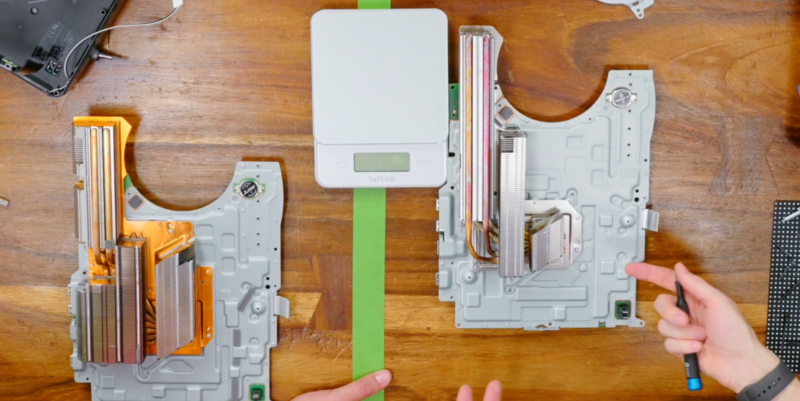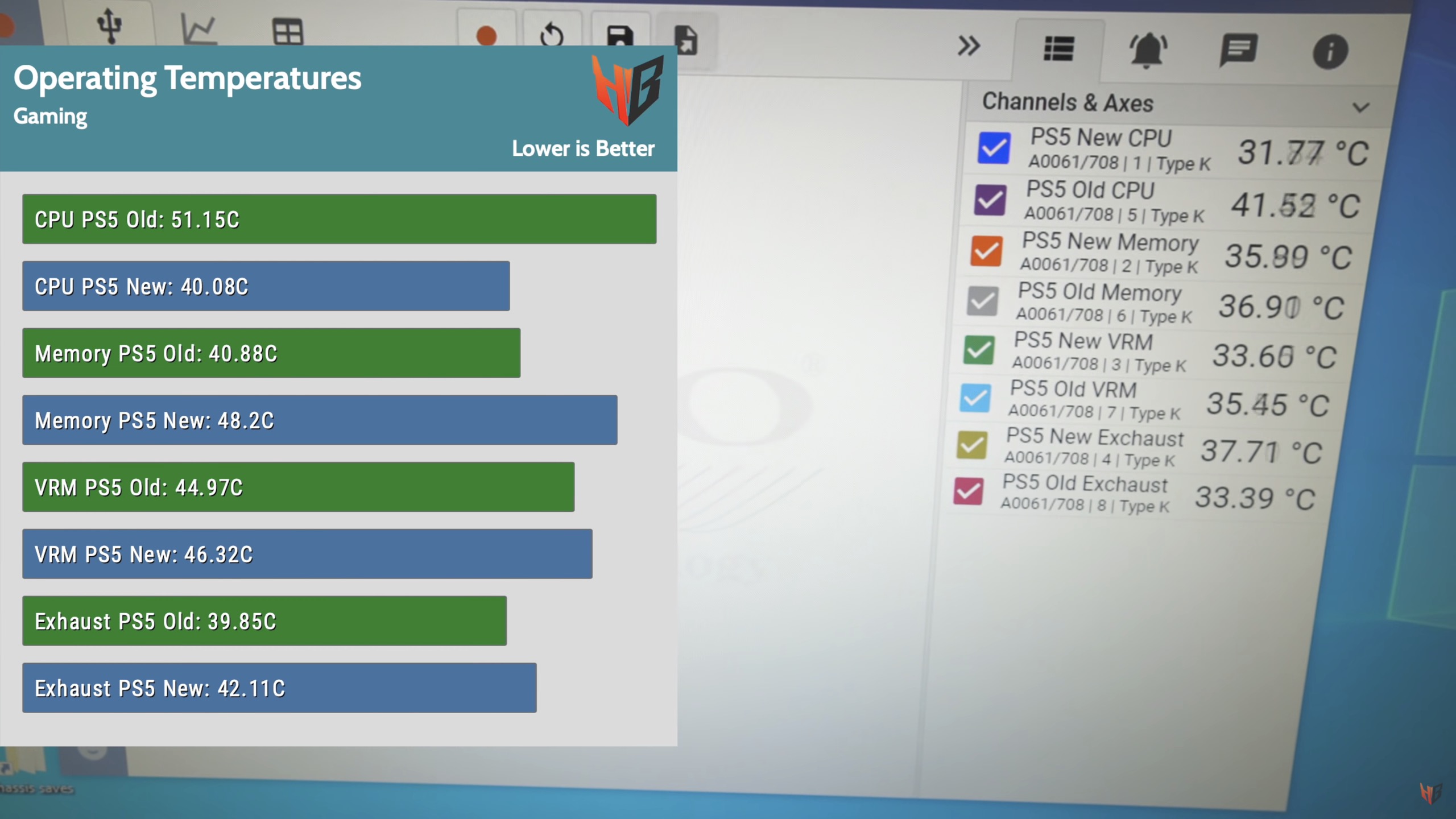
Last month, Sony began shipping a lightly revised version of its PlayStation 5 console with a smaller, lighter heatsink and a handful of other tweaks. An earlier teardown and analysis of the revised PS5 made headlines because it suggested that the new PS5 ran warmer than the old one, based on the temperature of the air being exhausted from the console. This does make some intuitive sense if you assume that a smaller heatsink will automatically be worse at dissipating heat. But more detailed and precise testing from the YouTubers at Hardware Busters International backs up our skepticism of that claim, showing that the PS5’s exhaust air is warmer because the new cooling system is doing a better job of removing heat from the console, as cooling systems are meant to do.
The Hardware Busters testing measured the temperature of the APU, memory, voltage regulator modules (VRMs), and exhaust air while Devil May Cry 5 was running on both PS5 models. The exhaust air is indeed a few degrees warmer in the new PS5 than the old one, but on average, the new PS5’s APU ran about 11°C cooler, dropping from about 51°C to 40°C.
The memory and VRM temperatures in the new PS5 rise a bit—the memory temperature goes up by around 7°C and the VRM temperature goes up by around 1.3°C—but neither increase should have a huge impact on the console’s reliability or longevity. The much larger drop in APU temperature is worth the tradeoff.

Comparing the CPU, RAM, VRM, and exhaust temperatures of the original PS5 and the revised model with the smaller heatsink.
These results only compare a single old PS5 to a single new PS5, and the numbers might look different with a larger sample size. But they should at least convince you that the newer, lighter PS5’s smaller heatsink is not automatically going to result in a hotter, louder, more failure-prone console. The new PS5’s model number is CFI-1102A, while the original’s is CFI-1000—look for these numbers if you want to make sure to get the new revision.
The Hardware Busters team identified a few other minor differences in the system board with the new revision but found that almost everything important to keeping the console cool—the number and type of fans, the fan speed, and the noise level—are either identical or nearly identical. The new PS5 was about one decibel louder, and its power consumption under most circumstances was a couple of watts higher, but this kind of minor variance between consoles is normal and not necessarily related to the heatsink or other internal changes.







